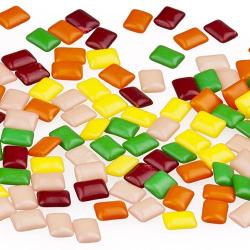Source Institutions
Source Institutions
Add to list Go to activity
Activity link broken? See if it's at the internet archive

Each learner chews a piece of gum until it loses its flavor, and then leaves the gum to dry for several days. By weighing the gum before and after chewing, they can determine the amount of mass lost which corresponds to the amount of sugar in the gum. Learners are then asked to design their own experiment to answer a question of their choosing related to the activity. Learners can follow this with a related activity: "How much Sugar is in Bubble Gum?" Resource contains detailed suggestions to assist learners who are designing their own experiment. Time requirement is intended to be spread over several meetings.
- Under 5 minutes
- 2 to 4 hours
- $1 - $5 per group of students
- Ages 11 - 14
- Activity
- English
Quick Guide
Materials List (per group of students)
- a few sheets of aluminum foil (or small plastic weighing boats, if available)
- a few permanent markers
- one piece of gum per student; packaged bubble gum (e.g., Bubble Yum or Bubblicious brands) containing sugar works best for the initial experiment; use only one brand and flavor of gum for the whole class
- several triple-beam balances accurate to 0.1 g (or electronic balances)
- additional gum will be needed for the second set of student-devised experiments; amounts and types depend on what students choose to investigate
Subjects
-
Engineering and Technology
- Engineering
-
Life Sciences
-
Human Senses and Perception
- Taste
-
Human Senses and Perception
-
Mathematics
-
Data Analysis and Probability
- Data Analysis
- Data Collection
- Data Representation
- Measurement
-
Data Analysis and Probability
-
Physical Sciences
-
Chemistry
- Solutions
-
Structure and Properties of Matter
- Mass and Weight
-
Chemistry
-
The Nature of Science
-
The Scientific Process
- About Inquiry
- Asking Questions
- Conducting Investigations
- Gathering Data
- Formulating Explanations
- Communicating Results
-
The Scientific Process
Informal Categories
- Food and Cooking
Audience
To use this activity, learners need to:
- see
- taste
Learning styles supported:
- Involves teamwork and communication skills
- Involves hands-on or lab activities
Other
Components that are part of this resource:
Includes alignment to state and/or national standards:
This resource is part of:
Access Rights:
- Free access
By:
- Hebrank, Mary R.
Source Collection
- TeachEngineering
Rights:
- All rights reserved, Regents of the University of Colorado, 2013
